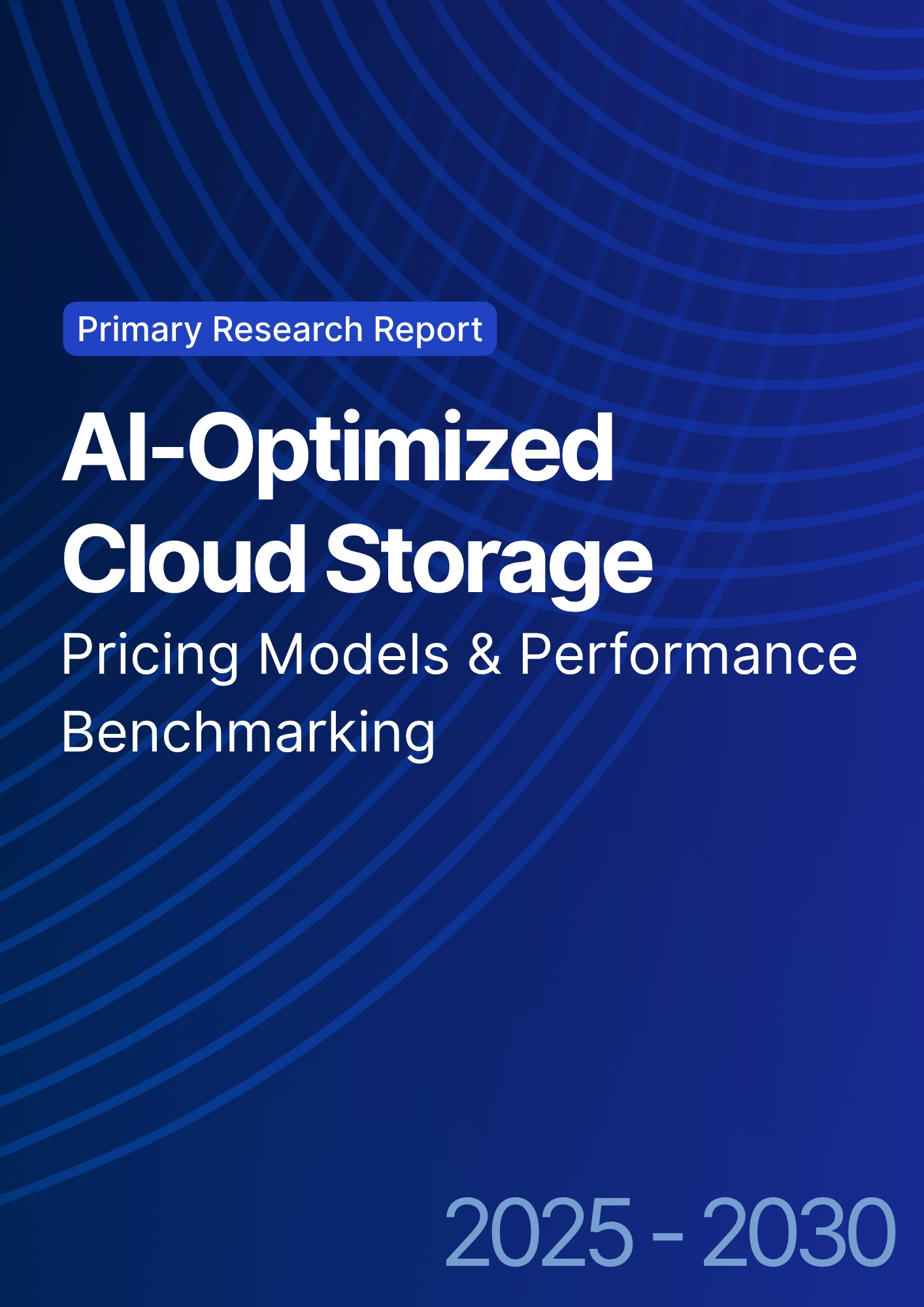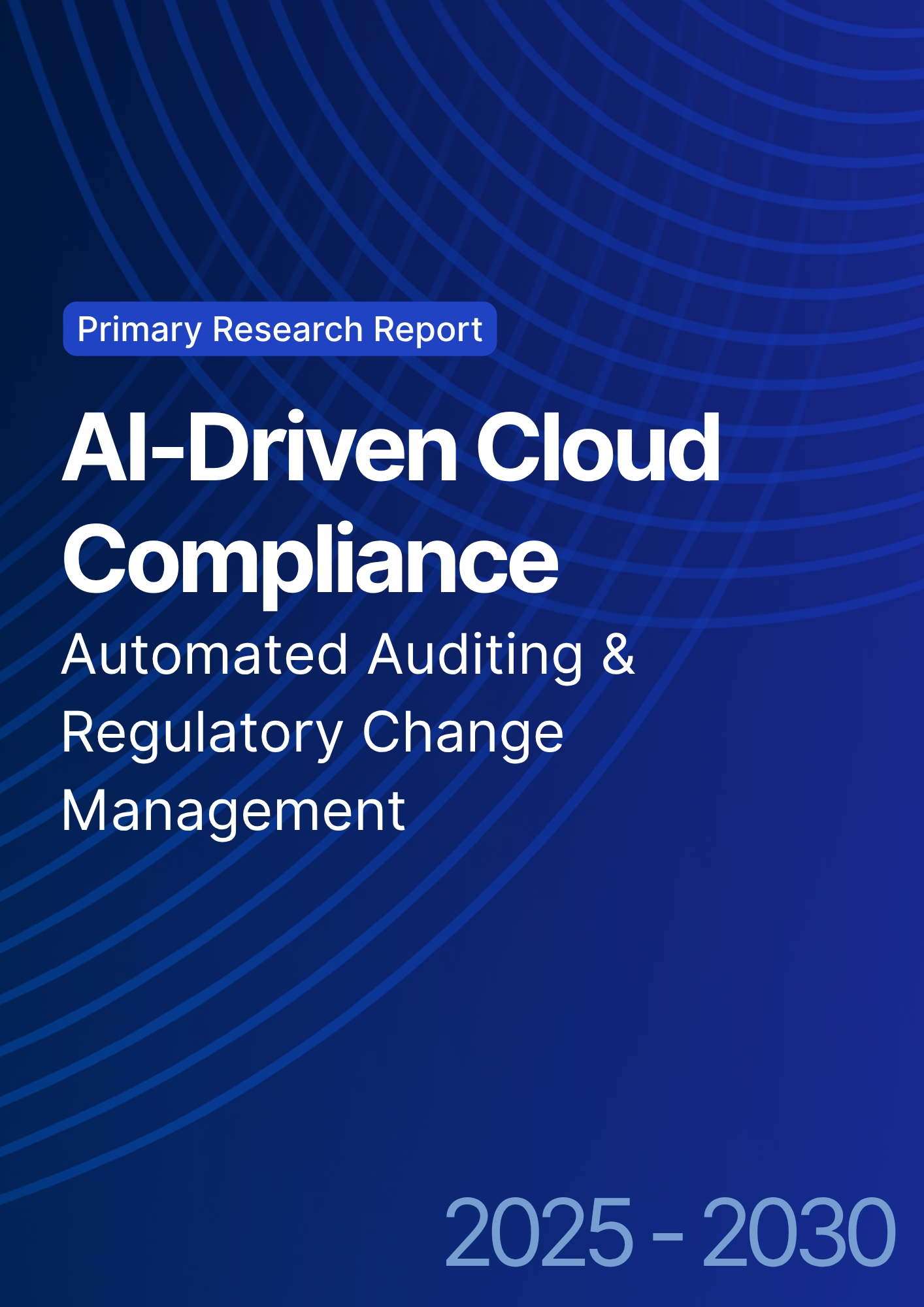

68 Circular Road, #02-01 049422, Singapore
Revenue Tower, Scbd, Jakarta 12190, Indonesia
4th Floor, Pinnacle Business Park, Andheri East, Mumbai, 400093
Cinnabar Hills, Embassy Golf Links Business Park, Bengaluru, Karnataka 560071
Connect With Us
AI-Optimized Cloud Storage: Pricing Models & Performance Benchmarking
Enterprises in Europe and the UK are modernizing storage with AI-assisted placement, tiering, and cost governance to handle AI/ML and unstructured data growth. AI-optimized storage spend is expected to rise from ~€2.1B in 2025 to ~€6.5B by 2030. Costs per GB drop from €0.035 to €0.016, while latency improves from 8.5ms to 2.7ms and throughput rises from 2.4 to 6.1 GB/s. Energy use per GB falls from 2.9Wh to 1.6Wh, improving sustainability and efficiency. The architecture includes telemetry-driven tiering and AI heuristics for caching. Risks like egress charges and cache thrash are mitigated by egress-aware data meshes and workload fingerprinting. AI-driven storage enables predictable performance, lower costs, and better sustainability outcomes.

What's Covered?
Report Summary
Key Takeaways
1. €/GB and €/IOPS fall with AI tiering, dedup/compression, and NVMe‑oF adoption.
2. Predictive placement boosts GB/s while keeping median latency <3ms by 2030.
3. Egress‑aware data meshes prevent surprise bills during cross‑cloud mobility.
4. Workload fingerprinting avoids cache thrash and improves hit ratios.
5. Lifecycle policies tie storage class to business value and compliance rules.
6. Energy per GB drops ~45% via heat‑aware placement and cold‑tier consolidation.
7. Open APIs + exportable recommendations improve procurement flexibility.
8. CFO dashboard: €/GB, €/IOPS, GB/s, ms latency, Wh/GB, and IRR.

a) Market Size & Share
AI‑optimized storage in Europe/UK is modeled to grow from ~€2.1B in 2025 to ~€6.5B by 2030 as buyers seek predictable unit economics and performance for AI/analytics and content workloads. The dual‑axis figure shows spend growth versus declining €/GB as predictive tiering and data reduction scale. Share consolidates with providers that can span NVMe block, high‑durability object, and archive tiers under one policy plane. Execution risks include egress costs, vendor lock‑in, and benchmark gaming; mitigations are open data paths, independent benchmarks, and egress‑aware meshes. Share tracking should weight €/GB and €/IOPS alongside GB/s throughput, latency tails, Wh/GB, and IRR.

b) Market Analysis
Our model shows €/GB falling from ~0.035→~0.016 and €/K IOPS from ~1.80→~0.95 by 2030 due to dedup/compression, intent‑based placement, and object‑tier consolidation. Throughput climbs ~2.4→~6.1 GB/s and latency improves ~8.5→~2.7ms with NVMe‑oF and adaptive caching. Energy per GB drops from ~2.9→~1.6Wh as data is cooled and compacted. These gains support IRR expansion from ~9→~18%. Enablers: cross‑tier data reduction, RL‑guided caching, and egress‑aware routing. Barriers: inconsistent tagging, inaccurate access forecasts, and closed APIs.
Financial lens: combine hard savings (capacity, I/O) with soft benefits (fewer performance incidents, faster analytics). The bar figure summarizes KPI movement for disciplined programs, highlighting how €/GB and €/IOPS reductions translate into predictable TCO.

c) Trends & Insights
1) Policy‑as‑code ties storage class and lifecycle to budgets, SLOs, and residency. 2) RL‑guided caching and prefetch reduce tail latency and hotspots. 3) NVMe‑oF expands in hot tiers as AI and databases demand consistent microsecond paths. 4) Object tiering consolidates cold data with retroactive compression and erasure codes. 5) Egress‑aware data meshes balance mobility with predictable spend. 6) Energy dashboards report Wh/GB and carbon intensity per tier. 7) Benchmarks evolve to reflect streaming AI loaders, parquet/ORC scans, and mixed small/large I/O. 8) Open recommendation exports prevent lock‑in and aid audits. 9) Data reduction shifts to near‑real‑time, minimizing write amplification. 10) Procurement favors outcome‑based pricing aligned to €/GB and tail latency.
d) Segment Analysis
BFSI: low‑latency hot tiers for trading/risk; strong residency and retention rules. Manufacturing: edge + central caching for MES/PLM; archive consolidation for compliance. Healthcare/Life Sciences: imaging archives and AI training pipelines with strict governance. SaaS/Tech: multi‑tenant NVMe and tiered object for logs/analytics. Public Sector: predictable spend, transparent data residency, and high‑durability archives. Across segments, track €/GB, €/IOPS, GB/s, latency tails, Wh/GB, and IRR; adjust policy sets quarterly based on workload fingerprints.
e) Geography Analysis
By 2030, we model Europe/UK spend distribution by use case as Hot Block Optimization (~26%), Object Storage Tiering (~24%), Cold Archive + Compliance (~18%), Edge/On‑Prem Hybrid Caching (~14%), Data Reduction (~12%), and Sustainability Optimization (~6%). The pie figure reflects the mix. UK finance and SaaS lead hot‑tier investments; continental EU emphasizes object and archive consolidation due to privacy and sovereignty. Execution priorities: unify telemetry, enforce policy‑as‑code, and publish quarterly KPI dashboards (€/GB, €/IOPS, GB/s, ms, Wh/GB, IRR).

f) Competitive Landscape
Competition spans cloud providers, storage platforms, and data‑reduction specialists. Differentiation vectors: (1) €/GB and €/IOPS trajectory with transparent pricing, (2) latency tail control and GB/s at scale, (3) open APIs and exportable recommendations, (4) data mobility with egress‑aware routing, and (5) sustainability metrics (Wh/GB). Procurement guidance: require benchmark results on representative mixes, explicit egress tables, policy‑as‑code compatibility, and savings audit trails. Competitive KPIs: €/GB, €/IOPS, GB/s, p95/p99 latency, Wh/GB, and IRR uplift.
Report Details
Proceed To Buy
Want a More Customized Experience?
- Request a Customized Transcript: Submit your own questions or specify changes. We’ll conduct a new call with the industry expert, covering both the original and your additional questions. You’ll receive an updated report for a small fee over the standard price.
- Request a Direct Call with the Expert: If you prefer a live conversation, we can facilitate a call between you and the expert. After the call, you’ll get the full recording, a verbatim transcript, and continued platform access to query the content and more.


68 Circular Road, #02-01 049422, Singapore
Revenue Tower, Scbd, Jakarta 12190, Indonesia
4th Floor, Pinnacle Business Park, Andheri East, Mumbai, 400093
Cinnabar Hills, Embassy Golf Links Business Park, Bengaluru, Karnataka 560071
Request Custom Transcript
Related Transcripts
$ 1350


68 Circular Road, #02-01 049422, Singapore
Revenue Tower, Scbd, Jakarta 12190, Indonesia
4th Floor, Pinnacle Business Park, Andheri East, Mumbai, 400093
Cinnabar Hills, Embassy Golf Links Business Park, Bengaluru, Karnataka 560071













